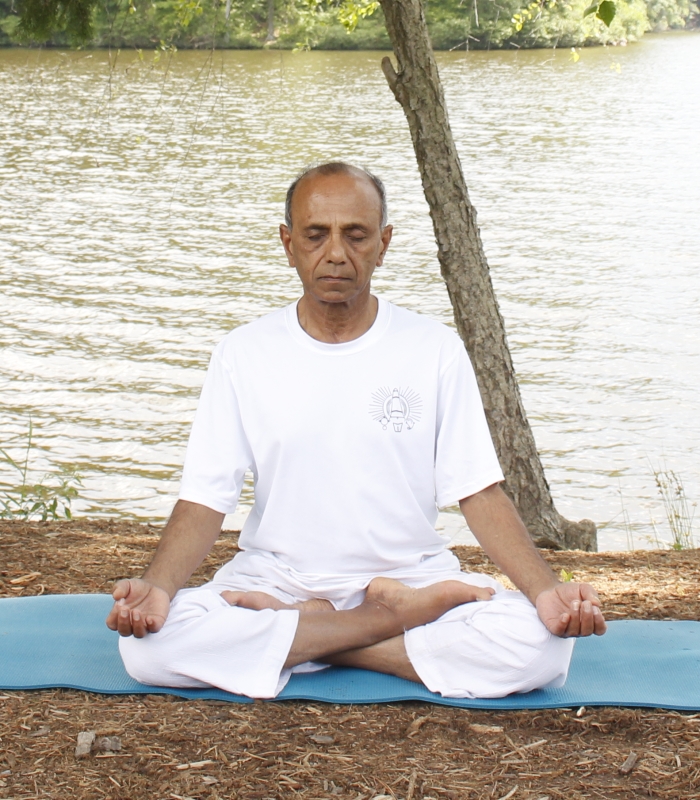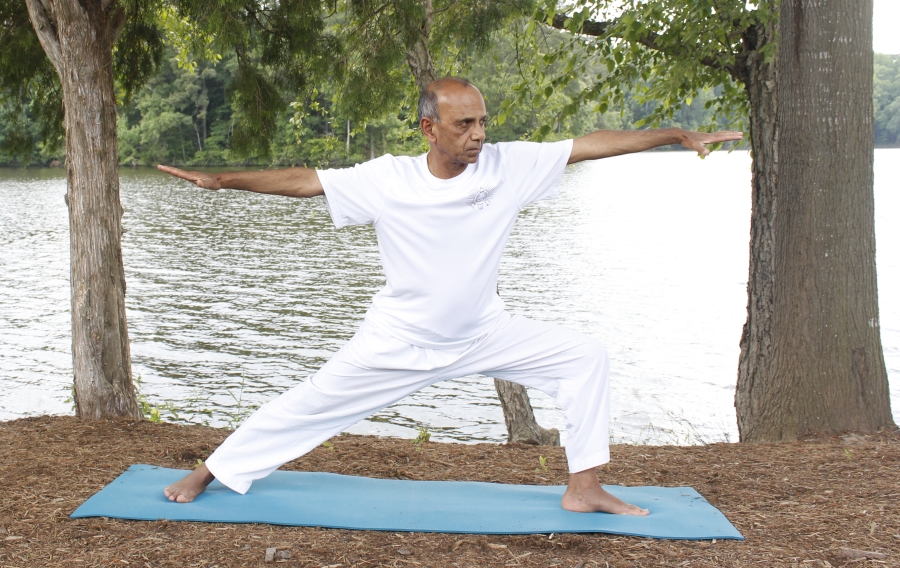
Padmasana (Lotus Pose)
स्थिरसुखमासनम्॥४६॥
sthira = steady; sukham = comfortable; aasanam = posture
Sw. Satchidananda
"Asana is a steady, comfortable posture."
Asana is that meditative posture that brings comfort and steadiness. If our body is not strong and flexible, then sitting in one pose will not remain steady or comfortable for any length of time. After a short time, the knees, spine or the shoulders etc. will begin to hurt.
The science and the practice of Hatha Yoga evolved to allow us to develop the requisite strength, flexibility, endurance and balance so we could stay in the meditative posture for a long time. The stiffness and tension in the body is caused by physical (chemical) and mental toxins that get deposited in the body. Improper diet and lack of proper exercise is the main cause for the deposit of toxins in the body.
Hatha Yoga practices include a variety of asanas (physical postures), pranayama (breathing practices), cleansing routines, and meditation to make the system strong, flexible and free of toxins. Hatha Yoga also provides guidelines for the proper diet that should be followed by the yoga practitioner. A regular practice of these yoga techniques will help develop the steady and comfortable posture that is given as the very definition of asana in this sutra.
Bryant
"Posture should be steady and comfortable."
Asana, which is only the third of the eight limbs of yoga, is usually equated with the practice of yoga, especially in the West. Patanjali has allocated only three sutras, totaling eight words, out of the 195 sutras to the description of asana. It is possible that Patanjali limited his description only to the definition of asana, leaving the specifics of various asanas to be retrieved from other prevalent texts. Vyasa, in his commentary lists twelve asanas whereas the Hatha Yoga Pradipika lists 15 asanas while mentioning that there were 84 asanas taught by Shiva.
Literally the word asana means a seat and in this sutra patanjali says that the asana should be steady and comfortable. The purpose of all the other asanas that are practiced today is to train the body so it can sit in a steady and comfortable pose for a long time for meditation. In the meditative posture there should be no movement or fidgeting of the body. It is also recommended that the head, neck and the trunk should be straight and aligned.

Virabhadrasana (Warrior2)
Discussion
the word asana is derived from the Sanskrit root word "aas" which means "to sit". "Asana" means both the sitting posture as well as whatever seat you are sitting on. So, Padmasana (Lotus Pose) would be an example of the sitting posture and the yoga mat or a bolster would be the asana on which you are sitting. Over time the meaning of the word asana got extended to include all the other physical postures which are a part of the Hatha Yoga practices. These are all the postures, like the Warrior Pose, headstand, forward and backward bending poses etc, which are practiced in majority of yoga classes. Of course, even this extended meaning of asana is supposed to follow the basic definition of asana given in the current as well as the next two sutras. Take, for example, the Warrior Pose. What this sutra states is that in the final position, the Warrior Pose should be steady and comfortable. Steadiness implies that there should be no shaking or trembling while holding the pose. Moreover, no strain or pain should be felt while holding the pose. When we follow these guidelines, every pose becomes a source of inner joy for us.
[…] (asana) should be done in a way that is stable (sthira) and comfortable (sukha). This comes from sutra 2.46, which is known by many people who practice yoga regularly, especially yoga […]